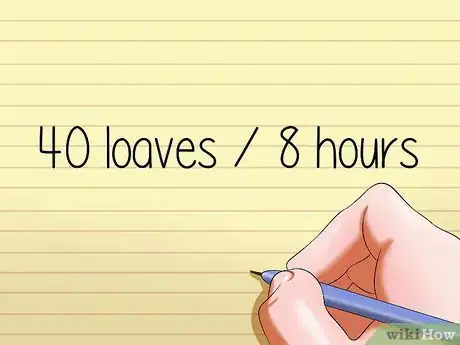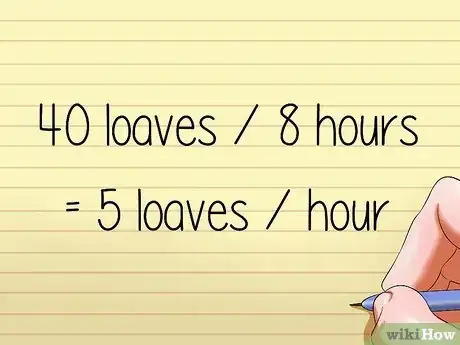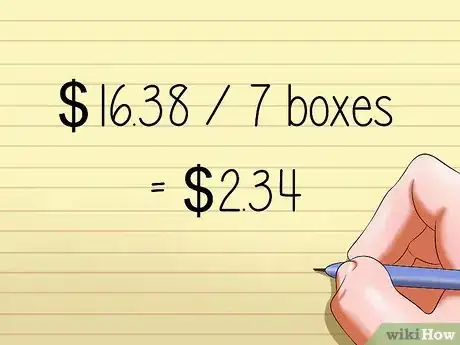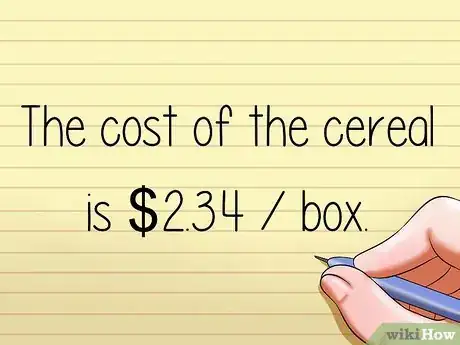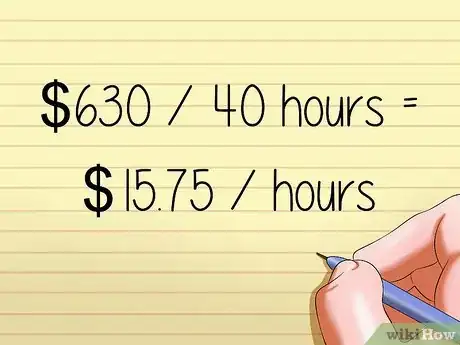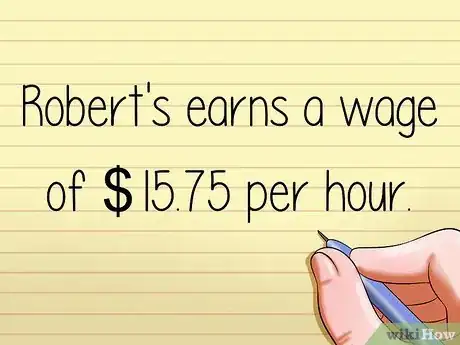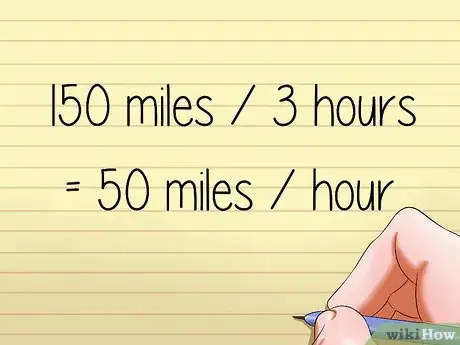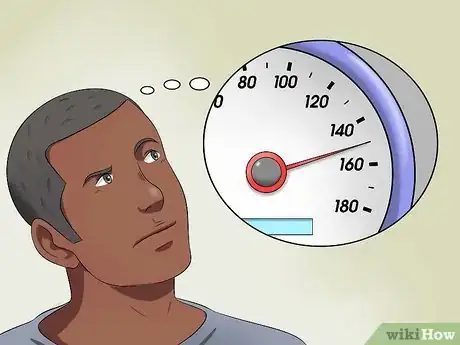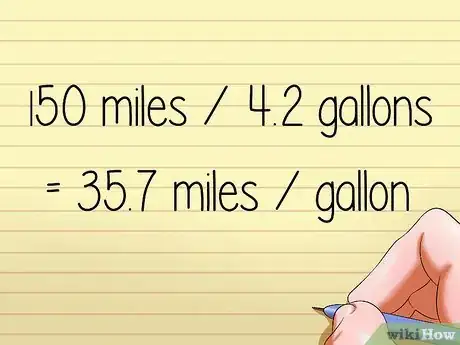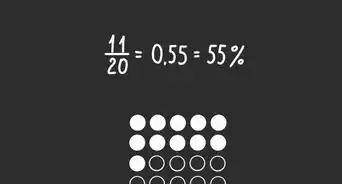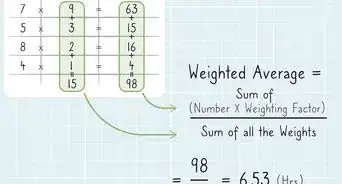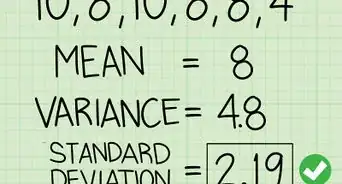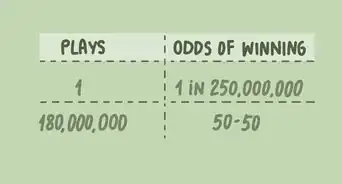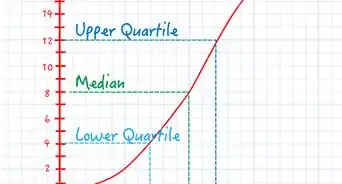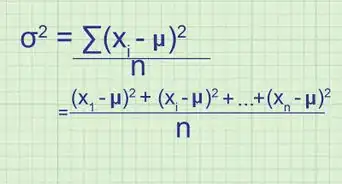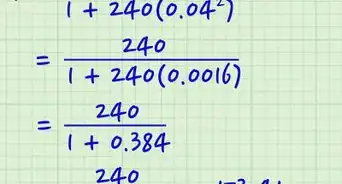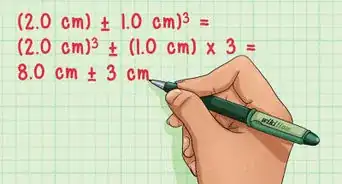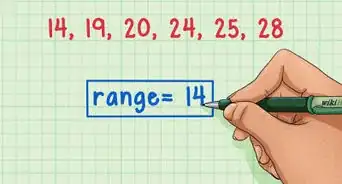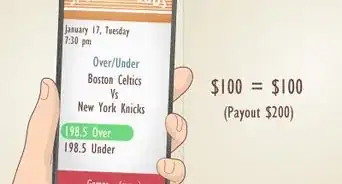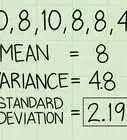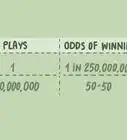wikiHow is a “wiki,” similar to Wikipedia, which means that many of our articles are co-written by multiple authors. To create this article, 18 people, some anonymous, worked to edit and improve it over time.
There are 8 references cited in this article, which can be found at the bottom of the page.
This article has been viewed 164,583 times.
Learn more...
“Unit rate” is a comparison of any two separate but related measurements when the second of these measurements is reduced to a value of one. Calculating the unit rate in any set of circumstances will require the use of division.
Steps
Part One: Calculating Unit Rate
-
1Understand unit rate. The unit rate is a special type of ratio in which the two separate measurements are compared and expressed as a quantity of one.[1]
- A "ratio" is any comparison of two numerical measurements. Each measurement is called a "term."
- A "rate" is a ratio in which the two terms are measured in different units. All rates are ratios, but not all rations are rates.
- A "unit rate" is a rate in which the second term equals "1." When calculating a unit rate, you need to determine how much of the first term exists for every one unit of the second term.
-
2Look at the data. The problem must have two terms, and you must be asked to determine how much of one term exists per unit of the other term.
- Common examples include: speed (miles/kilometers per hour), unit price (cost per item), and wage (earnings per hour/week).[2]
- If you aren't sure about whether or not you're being asked for the unit rate, look for the word "per" somewhere in the description. Some unit rate problems won't include "per," but many do.
- Example: A certain bakery can bake 40 loaves of bread in an 8 hour work day. How many loaves of bread can that same bakery make in one hour? In other words, how many loaves of bread are typically baked per hour?
Advertisement -
3Rewrite the data as a division problem. The first term in the problem—the amount you are trying to calculate per unit—will become the numerator (top number). The second term—the unit—will become the denominator (bottom number).[3]
-
Example: You must calculate loaves of bread per unit of time (in this case, the unit of time is an hour). The total loaves of bread will become the numerator, and the total hours will become the denominator, giving you:
- 40 loaves / 8 hours
-
Example: You must calculate loaves of bread per unit of time (in this case, the unit of time is an hour). The total loaves of bread will become the numerator, and the total hours will become the denominator, giving you:
-
4Divide both values by the denominator. To find the unit rate, simply solve the newly written division problem. Doing so will reduce the denominator to "1."[4]
- Example: Divide the total number of loaves by the total number of hours: 40 loaves / 8 hours = 5 loaves/hours
-
5Write the solution. You should now have your final answer ready.
- Make sure that you include both units in your answer. You can either separate the units with the fraction sign (/) or with the word "per."
-
Example: This bakery can bake 5 loaves/hour.
- Alternatively, you could write, "This bakery can bake 5 loaves per hour.”
Part Two: Practical Example—Unit Price
-
1Examine the problem. To calculate the unit price of any product, you will need to know how much money it will cost to buy a certain, set amount of that product. Use this information to calculate how many dollars (or another unit of currency) it will cost to purchase one unit of that product.[5]
- In other words, you are calculating the cost per item.
- Example: Jennifer purchased 7 boxes of cereal for a total cost of $16.38 (without tax). Assuming each box of cereal cost the same amount of money, calculate the unit price on the cereal Jennifer purchased.
-
2Divide the total cost by the total amount. Set up a fraction with the total cost as the numerator (top number) and the total number of items as the denominator (bottom number). Divide the total cost by the total number of items to reduce the denominator to a value of one.[6]
-
Example: The total cost, $16.38, should be set as the numerator. The number of items, 7, should be set as the denominator. In other words, the cereal costs: $16.38 / 7 boxes
- Treat the fraction as a division problem and solve: $16.38 / 7 boxes = $2.34 / box
-
Example: The total cost, $16.38, should be set as the numerator. The number of items, 7, should be set as the denominator. In other words, the cereal costs: $16.38 / 7 boxes
-
3Write your final answer. At this point, you should know the unit price of the product in question. Write the unit cost as an expression of cost per item.
- Make sure that you include both units labels in your answer.
-
Example: The price per box of cereal is $2.34.
- Another way of writing this answer would be: The cost of the cereal is $2.34 / box.
Part Three: Practical Example—Wage
-
1Look at the problem. To calculate wage, you need to know how much money will be earned over a specific period of time. You can then use that information to determine how many dollars (or another unit of currency) will be earned per one unit of time.
- Essentially, you calculating the cost per unit of time.
- Note that the unit of time will vary depending on the circumstances. In many cases, the unit of time used will be the “hour.” In some cases, though, you may need to use “day,” “week,” “month,” or “year.”
- Example: Robert worked 40 hours this week and earned $630.00 before taxes. Calculate Robert's wage as an expression of how much money Robert earns per hour.
-
2Divide the total pay by the total time. Rewrite the data in the form of a fraction. The total pay should be the numerator (top number) and the total amount of time should be the denominator (bottom number). Divide the numerator by the denominator to reduce that denominator to a value of one.[7]
-
Example: Set the total pay, $630, as the numerator. Set the total number of hours, 40, as the denominator. You should have: $630 / 40 hours
- Divide the fraction accordingly: $630 / 40 hours = $15.75 / hour
-
Example: Set the total pay, $630, as the numerator. Set the total number of hours, 40, as the denominator. You should have: $630 / 40 hours
-
3Write your final answer. You should now know the wage of the job in question. Write this down as an expression of cost per unit of time.
- You must include both units labels in your answer.
- Example: Robert's earns a wage of $15.75 per hour.
Part Four: Practical Example—Speed
-
1Look at the provided data. To calculate the speed of any moving object, you will need to know how much distance has been travelled over a certain period of time. From that data, you should be able to determine how many miles (or another measurement of distance) has been travelled per hour (or another unit of time).
- In essence, you are calculating the distance per unit of time.
- The units will vary depending on the circumstance, but one unit must express distance (mile, kilometre, feet, meters, etc.) and the other unit must express time (hours, minutes, seconds, etc.).
- Example: The Smith family travelled 150 miles in 3 hours. If they drove the same speed during the entire trip, how fast did the Smith family car drive as an expression of miles per hour?
-
2Divide the total distance by the total time. Write the data you have in the form of a fraction. The distance should be set as the numerator (top number) and the amount of time should be set as the denominator (bottom number). Divide the distance by the time as indicated, reducing the denominator to one unit of time.[8]
-
Example: Set the total number of miles, 150, as the numerator. Set the total number of hours, 3, as the denominator. This should give you a fraction of 150 miles / 3 hours
- Treat the fraction as a division problem: 150 miles / 3 hours = 50 miles / hour
-
Example: Set the total number of miles, 150, as the numerator. Set the total number of hours, 3, as the denominator. This should give you a fraction of 150 miles / 3 hours
-
3Write your final answer. Completing the previous step should tell you the speed of the object in question. Write the speed as an expression of distance per unit of time.
- Make sure that both unit labels are included in your final answer.
- Example: The Smith family drove their car at a speed of 50 miles per hour (miles/hour).
Part Five: Practical Example—Gas Mileage
-
1Examine the data. To calculate the gas mileage of a motor vehicle, you will need to know how much distance the vehicle is capable of travelling on a certain amount of gasoline. Use that data to calculate how many miles (or another unit of distance) can be travelled per gallon (or another unit of volume) of gasoline.
- This means that you'll be calculating the distance per volume of gasoline.
- The units may vary based on circumstance, but one must express distance (usually miles or kilometres) and the other must express volume (usually gallons or litres).
- Example: The Smith family's car needed 4.2 gallons of gasoline to drive a distance of 150 miles. Based on this information, determine the average gas mileage their vehicle is capable of as an expression of miles per gallon.
-
2Divide the total number of miles by the total number of gallons. Rewrite the data as a fraction, placing the distance in the numerator (top portion) and the volume of gasoline in the denominator (bottom portion). Divide the numerator by the denominator, reducing the denominator into one unit of volume.[9]
-
Example: The number of miles, 150, should be the numerator and the number of gallons, 4.2, should be the denominator. This means that: 150 miles / 4.2 gallons
- Treat the fraction as a division problem and solve: 150 miles / 4.2 gallons = 35.7 miles / gallon
-
Example: The number of miles, 150, should be the numerator and the number of gallons, 4.2, should be the denominator. This means that: 150 miles / 4.2 gallons
-
3Write your final answer. The previous step should indicate the gas mileage of the vehicle in question. Write this mileage as an expression of distance per unit of volume.
- Both unit labels must be included in the final answer.
- Example: The Smith family's car gets average gas mileage of 35.7 miles/gallon (miles per gallon).
Community Q&A
-
QuestionIf Becky can bike 75 miles in 3 hours, how many hours will it take her to bike 125 miles?
 AbbotheeggoCommunity AnswerIt will take Becky 5 hours to bike 125 miles.
AbbotheeggoCommunity AnswerIt will take Becky 5 hours to bike 125 miles. -
QuestionHow do I find the unit cost of something when I know the price and weight?
 DonaganTop AnswererThe unit cost of something is its price divided by its weight. For example, if something that weighs 2 pounds costs $3.00, its unit cost is $3.00 divided by 2 pounds, or $1.50 per pound.
DonaganTop AnswererThe unit cost of something is its price divided by its weight. For example, if something that weighs 2 pounds costs $3.00, its unit cost is $3.00 divided by 2 pounds, or $1.50 per pound. -
QuestionA recipe uses 6 cups of flour to make 4 pancakes, so how many cups of flour do I need to make 10 pancakes? How do I use the unit rate to solve this problem?
 DonaganTop AnswererIf it takes 6 cups of flour to make 4 pancakes, it takes 1½ cups to make 1 pancake. So the unit rate is 1½ cups per pancake. Multiply the unit rate by 10 pancakes to calculate the answer: (1½)(10) = 15 cups of flour.
DonaganTop AnswererIf it takes 6 cups of flour to make 4 pancakes, it takes 1½ cups to make 1 pancake. So the unit rate is 1½ cups per pancake. Multiply the unit rate by 10 pancakes to calculate the answer: (1½)(10) = 15 cups of flour.
References
- ↑ https://www.mathsisfun.com/definitions/unit-rate.html
- ↑ http://www.aaamath.com/rat-unit-rate.htm
- ↑ https://www.calculatorsoup.com/calculators/math/unit-rate-calculator.php
- ↑ http://www.calculatorsoup.com/calculators/math/unit-rate-calculator.php
- ↑ https://www.mathsisfun.com/measure/unit-price.html
- ↑ https://www.mathsisfun.com/measure/unit-price.html
- ↑ https://www.bls.gov/k12/productivity-101/content/what-is-productivity/what-is-unit-labor-cost.htm
- ↑ https://www.khanacademy.org/test-prep/praxis-math/praxis-math-lessons/praxis-math-number-and-quantity/a/gtp--praxis-math--article--rates--lesson
- ↑ https://courses.lumenlearning.com/mathforliberalartscorequisite/chapter/writing-rates-and-calculating-unit-rates/
About This Article
To calculate a unit rate, you want to figure out how much of one item exists for every 1 unit of a second item. First, rewrite your data as a division problem, where the numerator is the amount you’re trying to calculate and the denominator is the unit. To get the unit to equal 1, divide both numbers by the denominator; your answer is the number you get by dividing the numerator by the denominator. Use this method to calculate unit cost, too—you’re calculating how much 1 item is worth, after you’re given the amount that multiple items cost. Divide the total price by the amount of items to get the unit cost of 1 item. If you want to learn how to calculate an hourly wage using the unit rate formula, keep reading!


